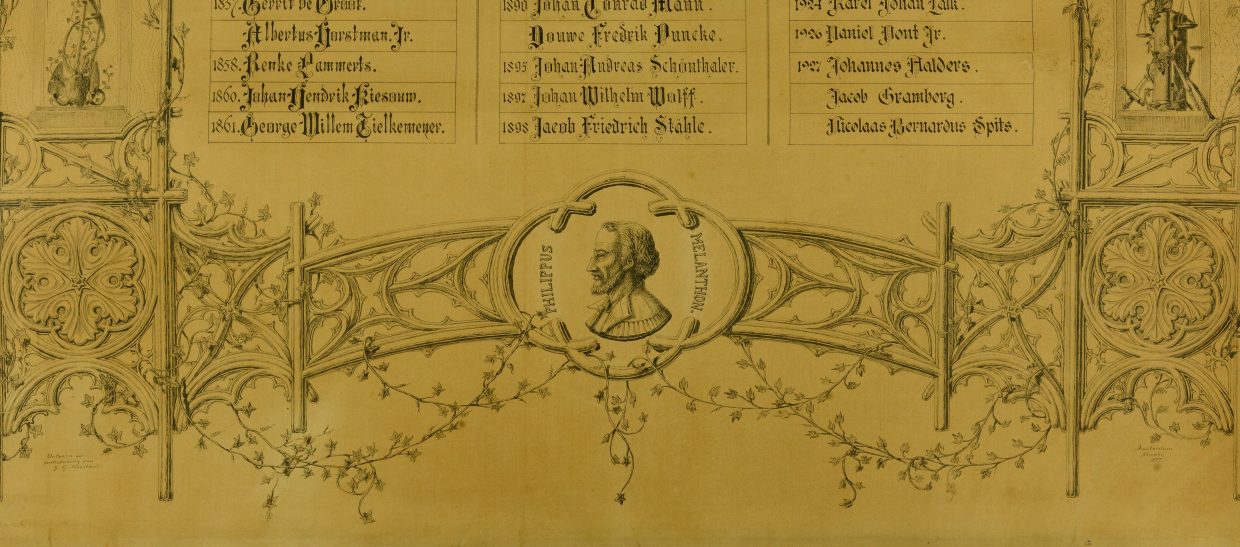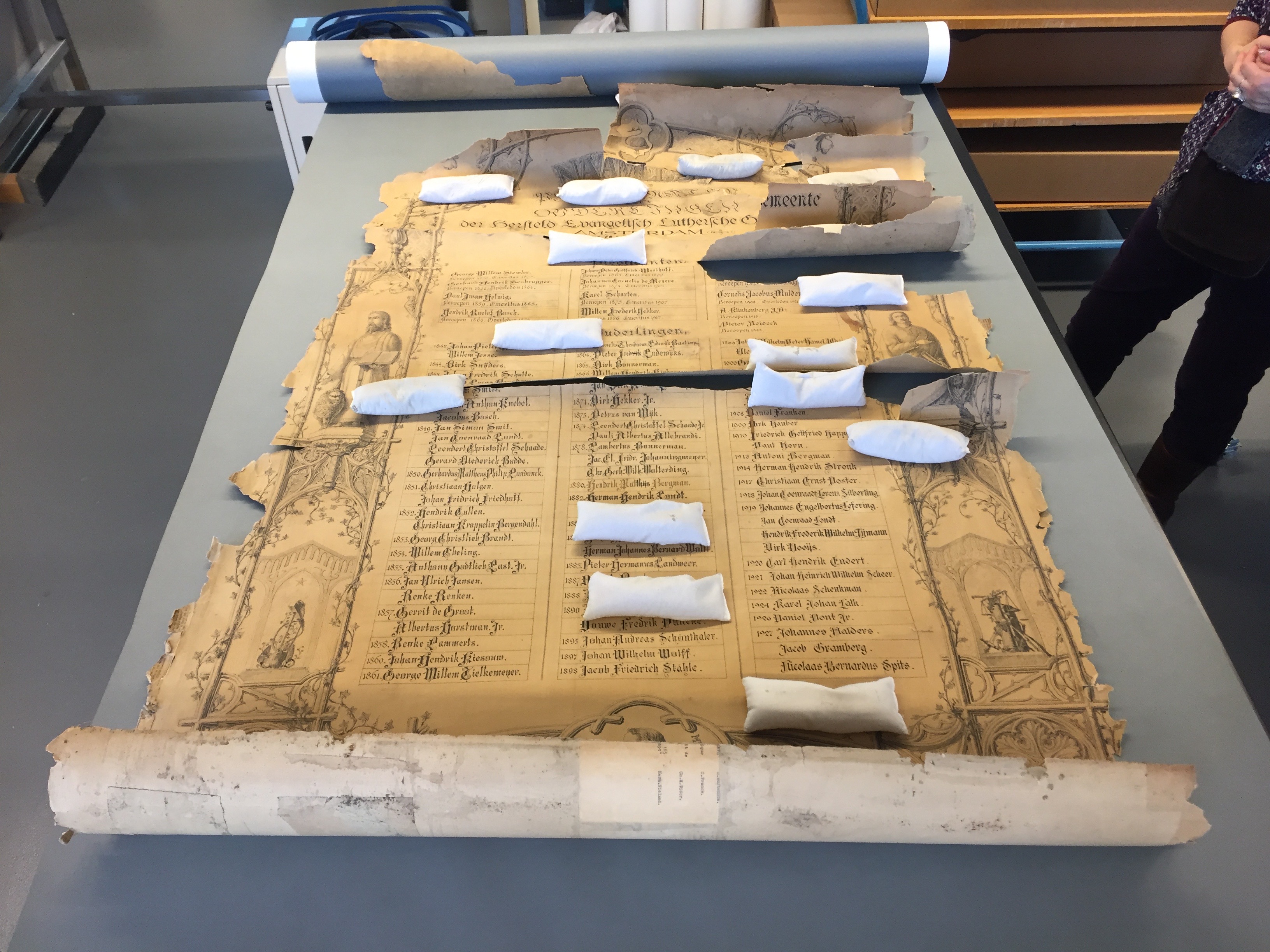 This project was undertaken while I was interning at Stadsarchief Amsterdam (the Amsterdam City Archives), in the Netherlands. It is a wall hanging with a list of Lutheran ministers from 1847 to 1927. It is 152.2 cm x 91.5 cm (approximately 5 ft x 3 ft) and has extensive mould damage from hanging against the church’s damp stone walls. All of the media is iron gall ink.
This project was undertaken while I was interning at Stadsarchief Amsterdam (the Amsterdam City Archives), in the Netherlands. It is a wall hanging with a list of Lutheran ministers from 1847 to 1927. It is 152.2 cm x 91.5 cm (approximately 5 ft x 3 ft) and has extensive mould damage from hanging against the church’s damp stone walls. All of the media is iron gall ink.
It has been stored rolled due to its large size since it was removed from the church wall. I was asked to mend and stabilize the hanging so it can be stored and exhibited safely.
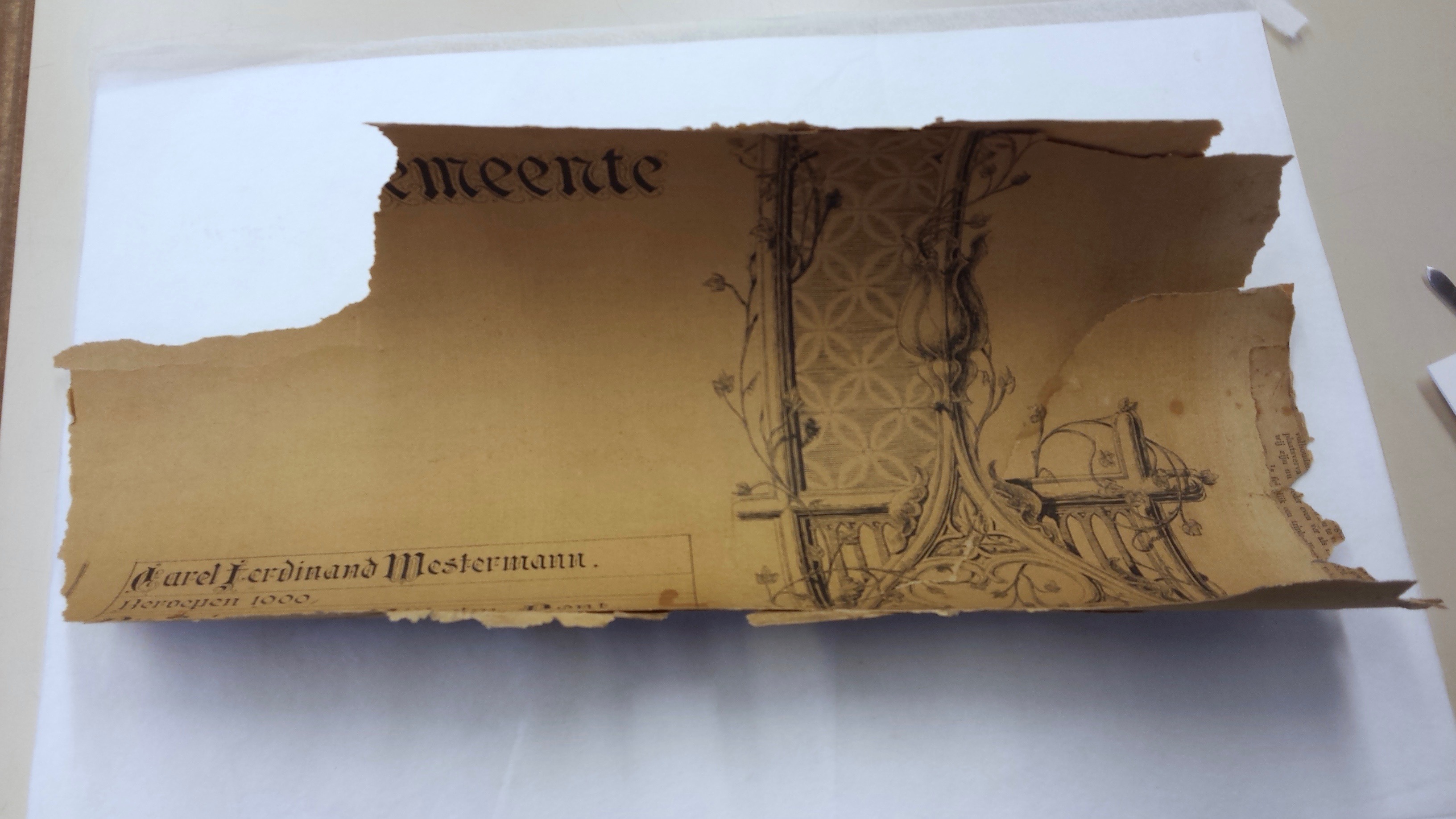
Paper has a memory and remained curled once it was removed from storage. The hanging was presented to me in seven pieces, but the weakened paper continued to split and crack along its wrinkles and creases.
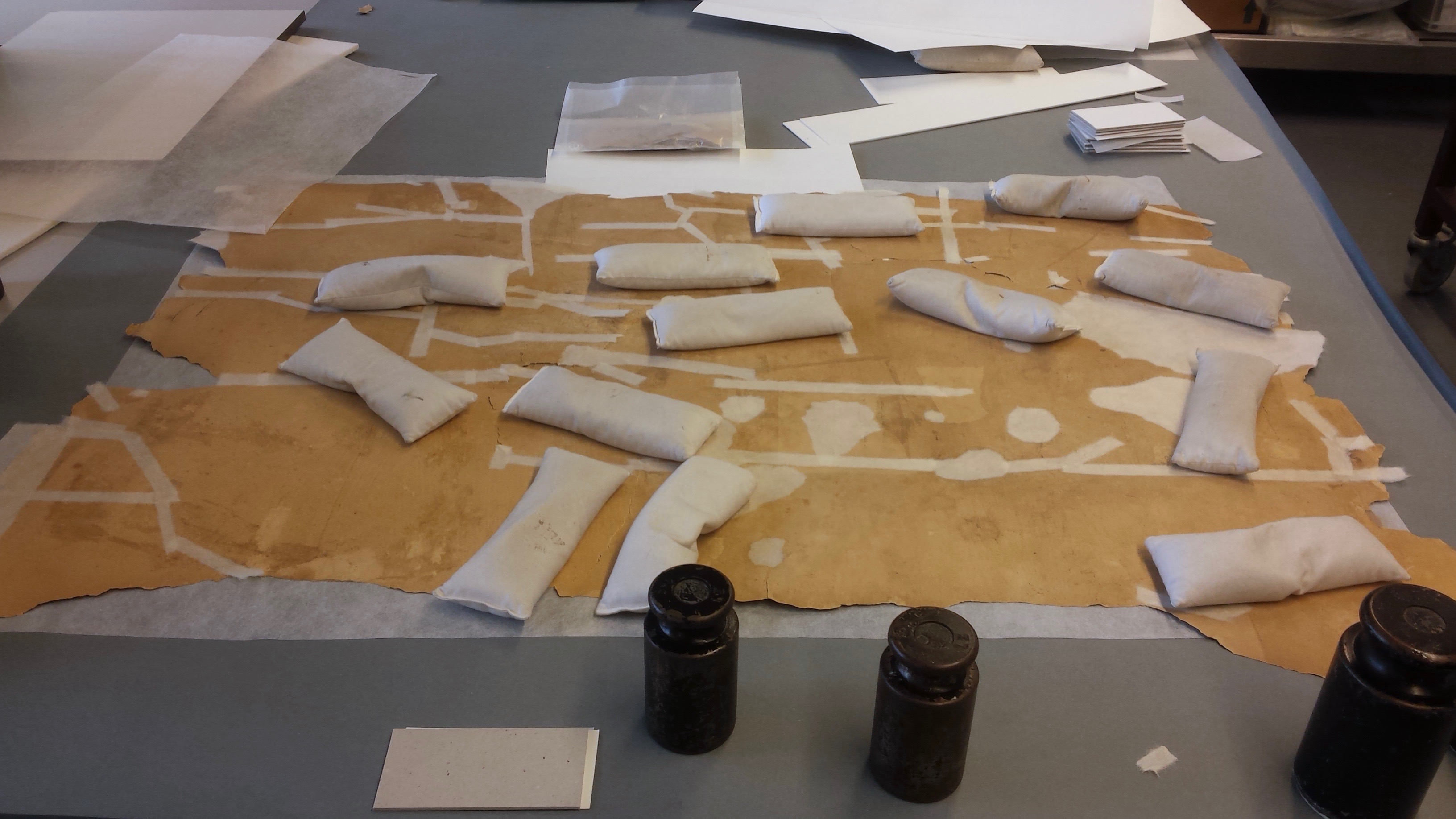
After surface cleaning, I began the delicate process of puzzling the pieces back together. This was done in stages, so that it was easier to match up the media on the front and turn it over to re-assemble the pieces using strips of Japanese paper and wheat starch paste.* Simultaneously, creases were prevented from cracking and areas of mould damage were supported by reinforcing them with the same paste and Japanese paper.
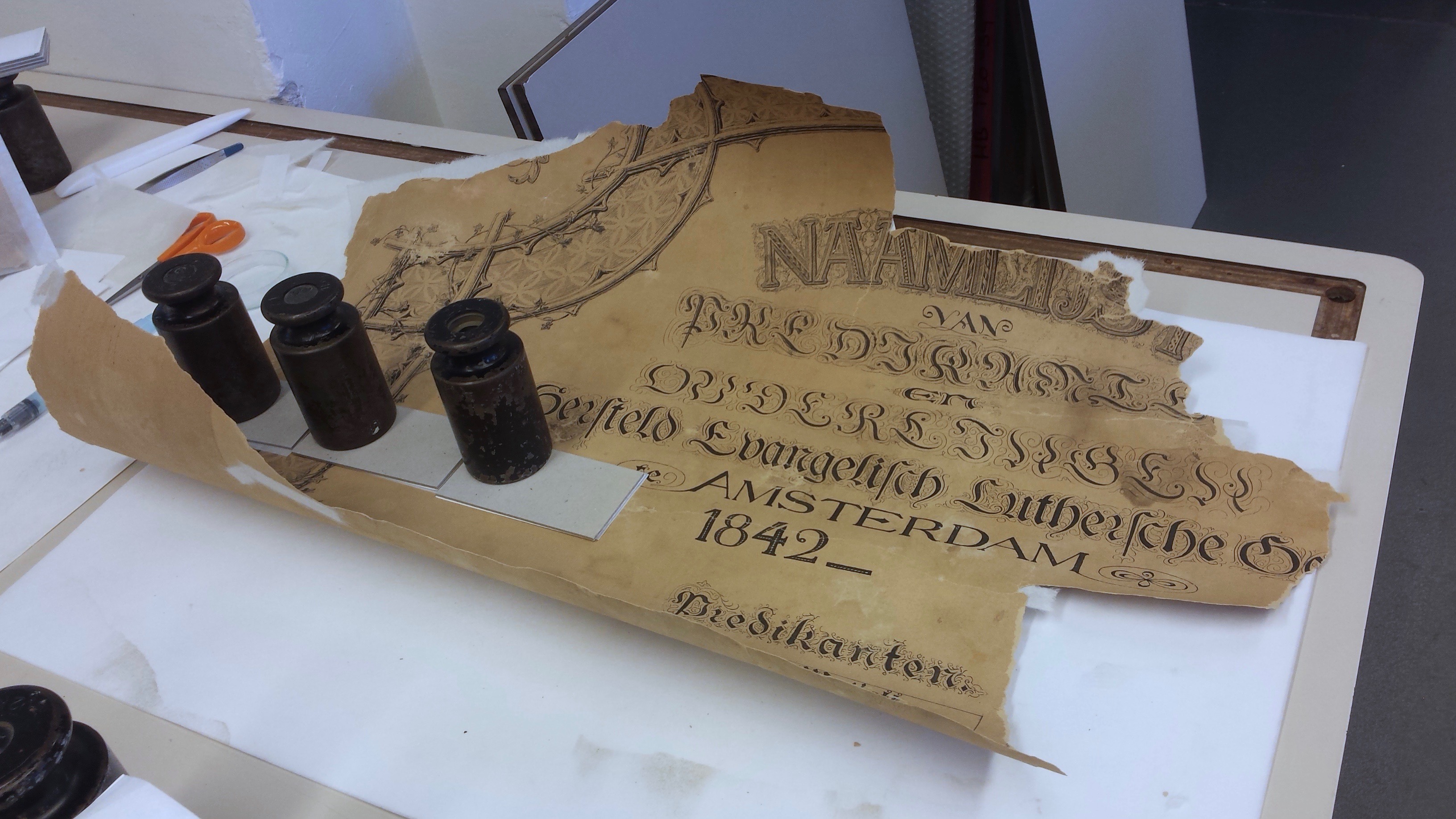
The larger assembled pieces were flipped over, and cool liquid gelatin was used to adhere the overlapping edges of the tears. The wall hanging was left in two pieces (top and bottom) so that it can be stored flat instead of being rolled up again.
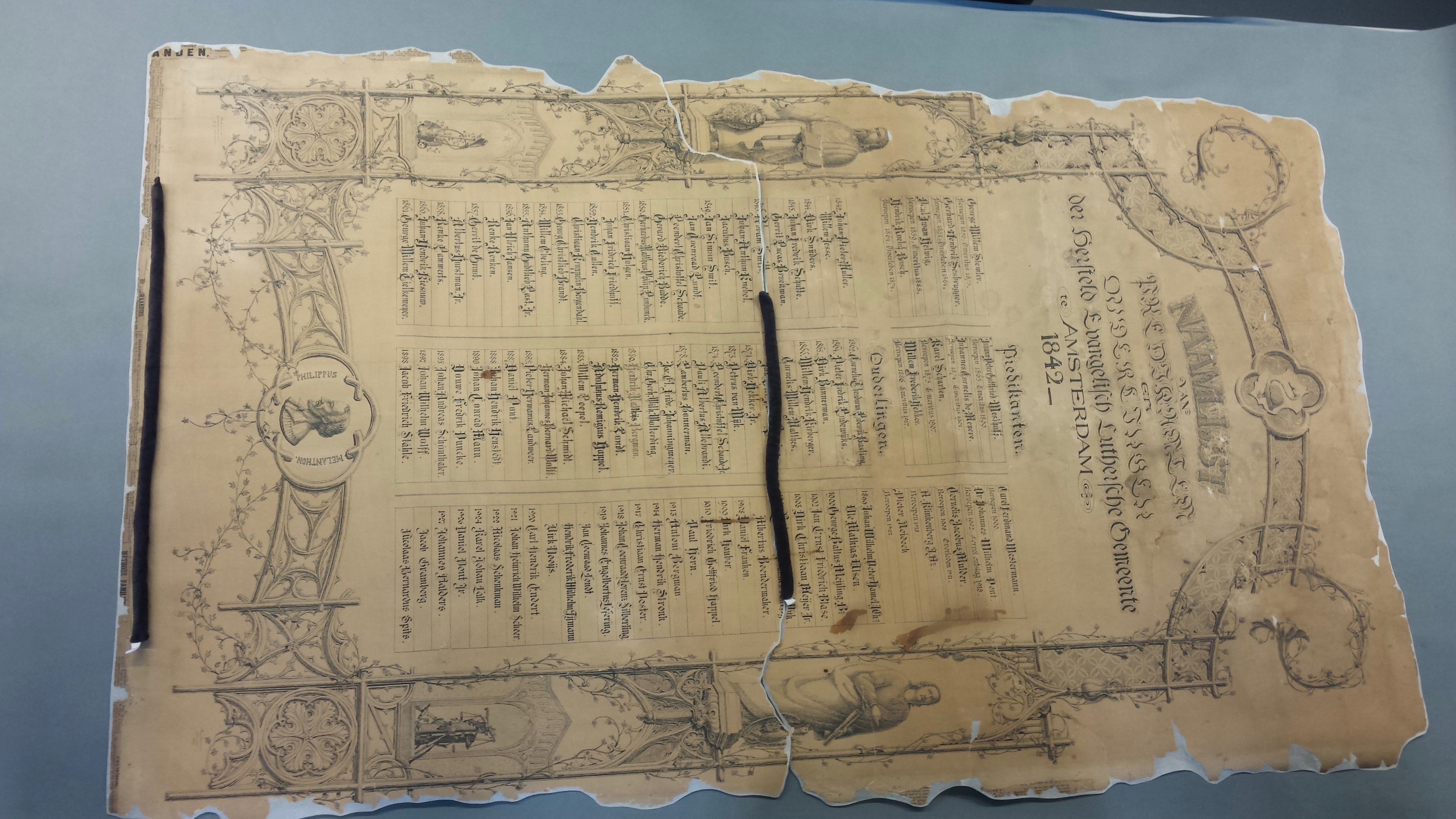
The final step was to support the edges with a three-inch-wide strip of Japanese paper to deter further breakage and to make handling the hanging safer.
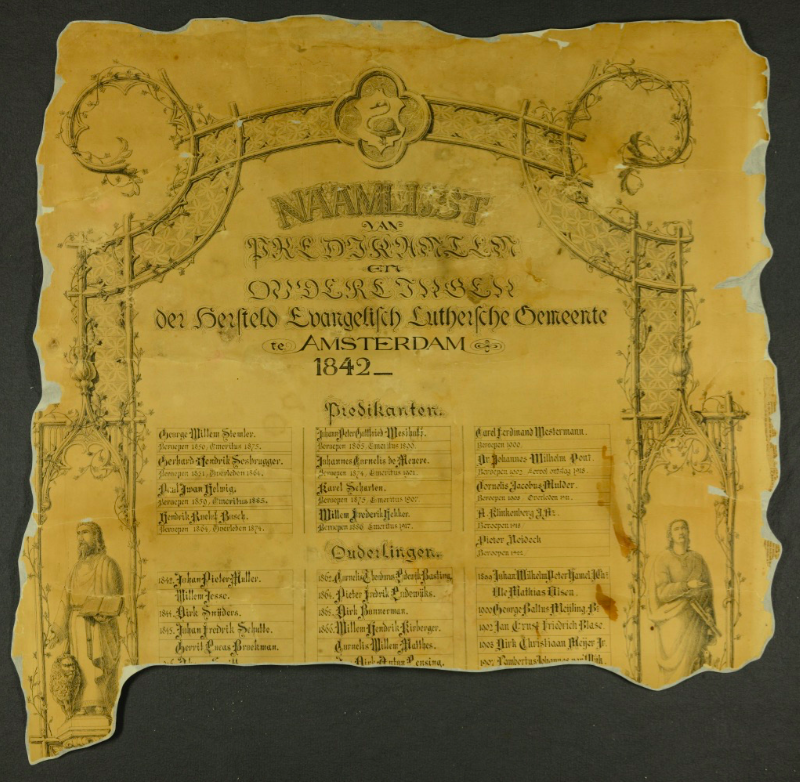
It is now stable and (mostly) flat.
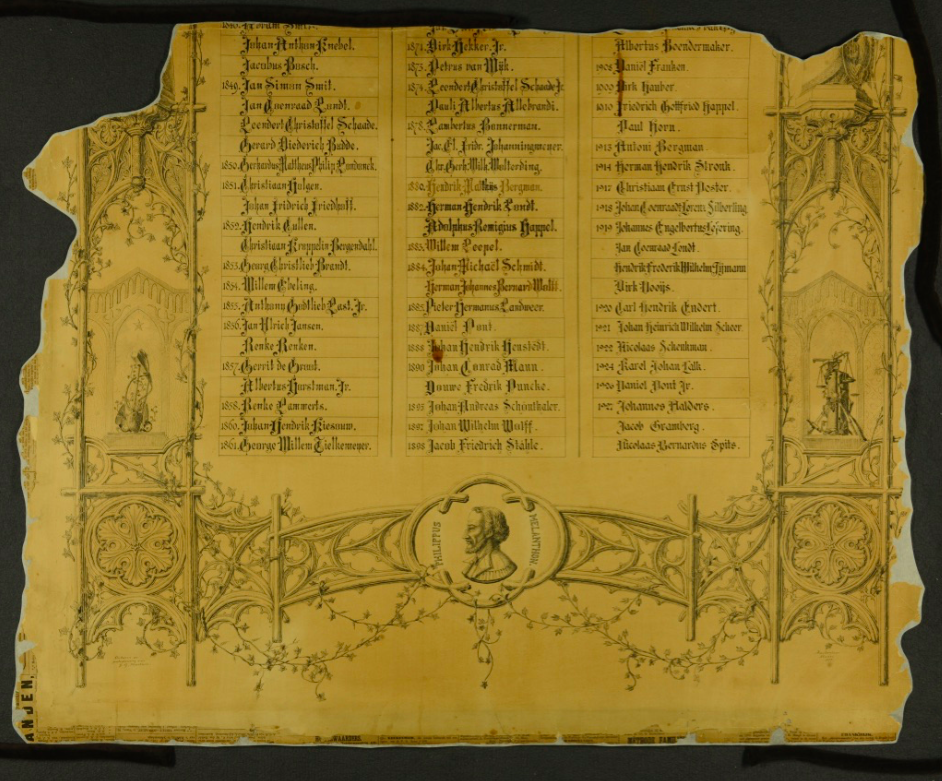
* Testing was carried out using various techniques to decide what would be best method of applying the repairs. Dry paste ended up working the best. The fairly wet paste was brushed onto the repair paper and allowed to partially dry before the repair was applied. This technique allowed for a thin, even layer of adhesive while prevented moisture from soaking through to the iron gall ink.
